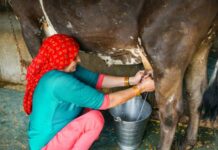Tokyo, May 27, 2017: Morinaga Milk Industry Co., Ltd. (TOKYO:2264), a leading dairy product company in Japan, announced the results of a new study that show how gut microbiota composition in a healthy human population changes with age. The study, which utilized new technology for sequencing DNA, is unique due to its size and the wide age range of its subjects (newborn to 104 years). These factors contribute to a new, comprehensive picture of the typical pattern of evolution of bacteria in the human gut.
This Smart News Release features multimedia. View the full release here: http://www.businesswire.com/news/home/20170303005206/en/

Seminal research in the 1970s by Dr. Mitsuoka demonstrated drastic changes in the composition of gut microbiota species as people age 1 (Figure 1). However, at that point in time, only about 20 to 50% of gut microbiota species had been identified by the culture-based method. Despite major advances in microbiota analytical technologies, to date no large-scale analysis of the gut microbiota has been conducted to update these important findings.
Morinaga, a pioneer in research on human gut microbiota, particularly Bifidobacteria, conducted the research in collaboration with Dr. Ro Osawa of Kobe University. They analyzed and compared the gut microbiota of 367 healthy Japanese individuals ranging from newborn to 104 years old using next-generation sequencing (a method for sequencing DNA). The results revealed a pattern of sequential changes in gut microbiota by age2. The researchers also analyzed the fecal samples obtained from 441 healthy subjects by real-time PCR with species-specific primers in the following research and confirmed long-term changes of Bifidobacterium species in the gut.
“Over the past decade, research conducted worldwide has revealed the crucial nature of gut microbiota to host health. However, the typical gut microbiota in healthy individuals has not been established.” Dr. Osawa explained. “By analyzing an enormous number of microbiota from healthy populations in every age group, our findings could enable future research to identify the healthy gut microbiota composition in each life stage,” he continued.
Age-related Changes in Composition of Gut Microbiota
Figure 2 shows the sequential changes of the gut microbiota from infants to centenarians. While many phyla rise, the phylum Actinobacteria, including Bifidobacteria — the predominant bacteria in infants — declines rapidly after weaning and decreases even further after age 60. It also showed the predominance of the phylum Proteobacteria, such as Escherichia coli, in infants and the elderly.
Gut Microbiota Differ Greatly Among Infants, Adults and Elderly
When subjects with similar gut microbiota composition are grouped together (clustering), distinct groups are formed according to broad age groups(Figure 3).This indicates that age-related differences in gut microbiota are greater than individual differences. It should be noted, however, that some adult subjects were classified into the “Elderly 1” group because they harbored gut microbiota not typical for their age. This suggests that in some people, the age of their gut microbiota may be greater than their chronological age.
Bifidobacterium longum Showed the Highest Detection Rate of 88.1%
Changes of Bifidobacterium species proportions in the gut microflora of 441 healthy Japanese populations aged from 0 to 104 years were also investigated. B. longum was widely detected in most individuals, from nursing infants to centenarians. Its detection rate was the highest among all investigated species — 88.1% — highlighting its importance to human health. The result also indicates that B. breve was predominant in children under 3 years old, whereas B. catenulatum group and the B. adolescentis group were predominant after weaning.
Dr. Jin-zhong Xiao, General Manager of Morinaga’s Next Generation Science Institute, points out that B. longum is versatile among microbiota species. “B. longum was shown to be genetically suitable to ferment both plant-derived and human milk oligosaccharide derived sugar. This characteristic could explain why B. longum is the most widespread species at all ages.” 3
B. animalis ssp. lactis, which is not considered to be a species of human gut microbiota was also detected in 11.4 % of subjects, but it was restricted to individuals after weaning to less than 80 years old. “Although B. animalis ssp. lactis is thought to be not feasible for using wide variety of carbon resources in the human gut environment, its widely-use as probiotics in commercial dairy products might affect the detection after weaning”. Dr. Xiao remarked, “This study showed a significant correlation of all species of Bifidobacteria except B.animalis ssp. lactis,” a finding which implies “B. animalis ssp. lactis is not a commensal component in the human gut.”
“We will continue further research on human gut microbiota to contribute to healthy human development and the prolongation of life expectancy,” Dr. Xiao added.
Corporate Comm India (CCI Newswire)

































